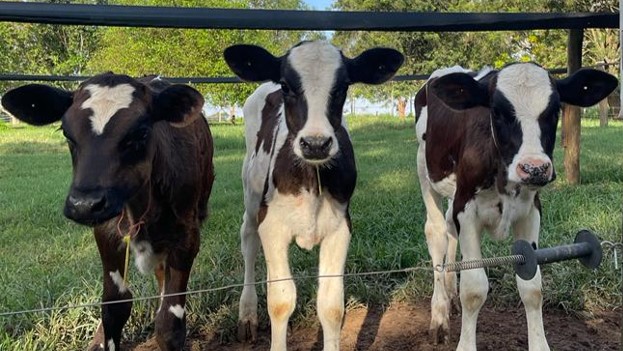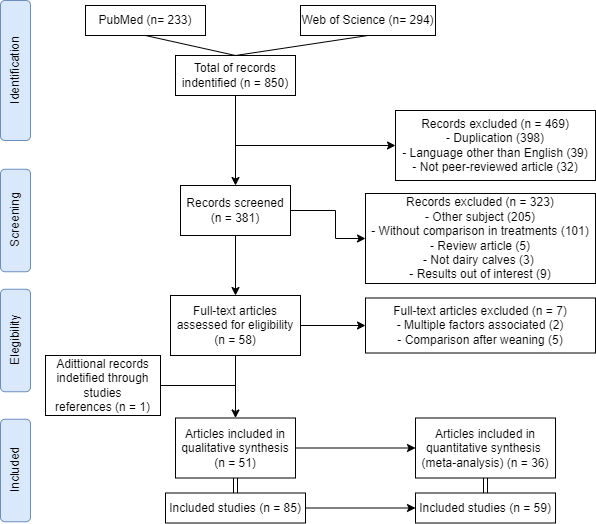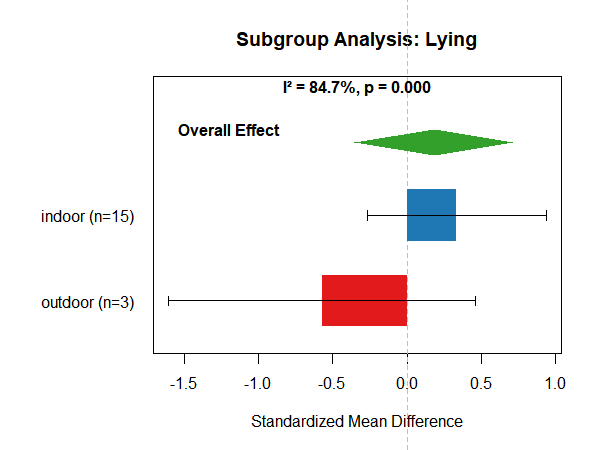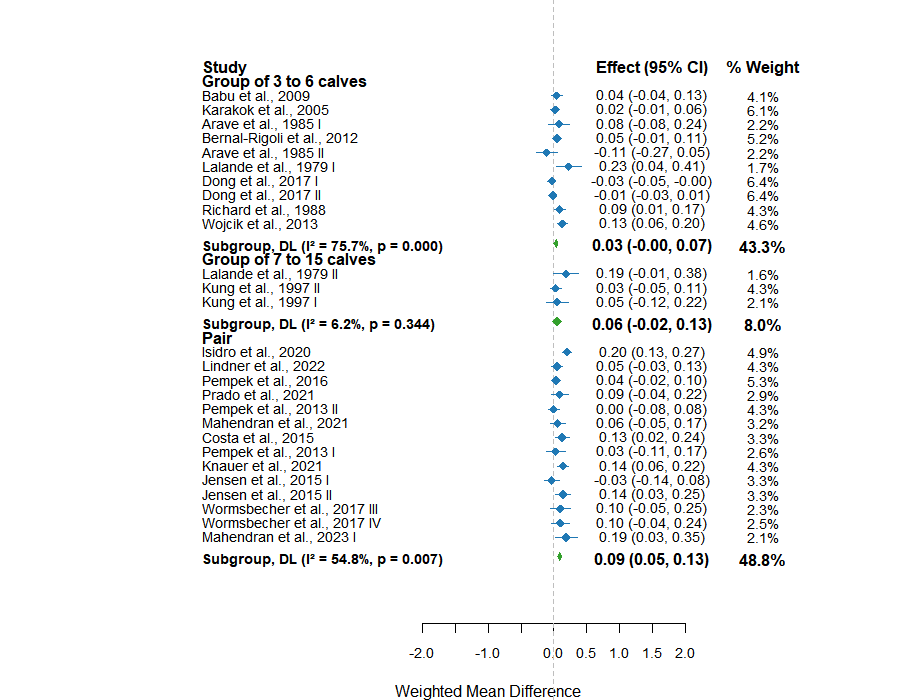Meta-analysis: Calves in Group Housing

Background
Dairy calves are traditionally separated from dams shortly after birth and raised individually during the preweaning period. While this practice is common, it contrasts with natural social dynamics and raises welfare concerns. Social isolation can lead to stress, fearfulness, and reduced cognitive development. Group housing (pairs or small groups) has emerged as a potential alternative, but its effects on performance, health, and behavior remain inconsistently reported across studies.
Goals
- Assess how group housing impacts performance, health, and behavior compared to individual housing of dairy calves
- Investigate housing factors that may influence the outcomes of group housing for dairy calves
- Synthesize findings to support practical improvements in calf-rearing systems
Results
- Group-housed calves had higher average daily gain (ADG) (+0.06 kg/d, P = 0.001) and weaning weight (+1.44 kg, P = 0.037)
- More active behaviors (feeding, playing) and fewer stress-related behaviors (self-grooming, pen interactions) in group-housed calves
- Limited data on robust health outcomes (e.g., disease incidence)
Flowchart

The process to identify and screen articles for eligibility and inclusion in this systematic review and meta-analysis.
Subgroup analysis

Different housing systems (indoor and outdoor) have different effects on the lying behavior of dairy calves.
Forest plot

Studies on pair-housed calves showed a higher average daily gain compared to individually housed calves.